A project by Oliver Ressler
Salzburger Kunstverein/Ringgalerie, 1996
The so-called greenhouse effect has been recognized as a phenomenon for over a century, yet it has been taken seriously as a global threat only in the past two decades, and only in the past decade have policies at an international level dealt with the introduction of preventative measures.

In 1896, Svante Arrhenius published “On the Influence of Carbonic Acid in the Air upon the Temperature of the Ground.” (1) In this, the Swedish scientist informed the scientific community that, according to his calculations, the average global temperature would increase over the long term as a result of the carbon dioxide produced by humans (through combustion processes). Arrhenius’s text marks the starting point of a discontinuous debate on the greenhouse effect.
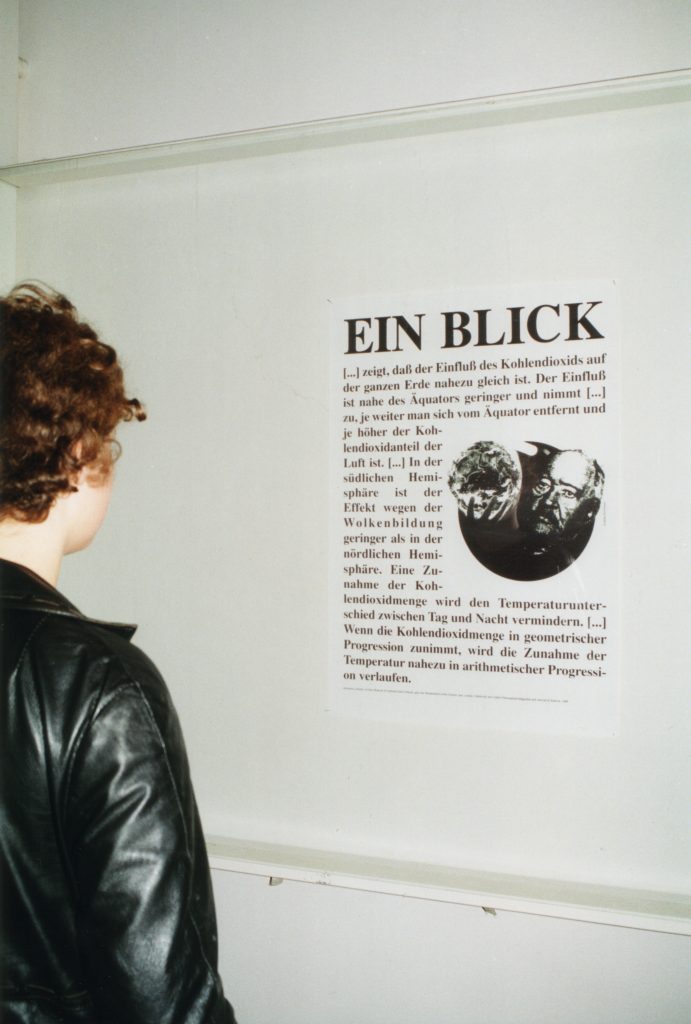
The digital prints shown in the outer area of the Ringgalerie of the Salzburger Kunstverein contain general information about the natural and anthropogenic greenhouse effect and its potential consequences.
In the inner area of the Ringgalerie is a critique of strategies carried out as solutions for the greenhouse effect, based on a study “Zukunftsfähiges Deutschland (Future-capable Germany)” (2) compiled by the renowned Wuppertal Institut für Klima, Umwelt, Energie (Wuppertal Institute for Climate, Environment, and Energy). The Wuppertal Institute is the most influential research institute in the German-speaking world that “is systematically involved with both global ecological challenges as well as with the complex tasks of an ecological structural transformation. It takes on a mediating function between science, economics, and politics” (newsletter publication from the Institute). The models for a market economy regulated by ecological criteria, which have been worked out by the Wuppertal scientists, rest on “sustainable development” concepts already in existence for over a decade, whereby in the meantime, the more trendy term “future-capable” is employed.
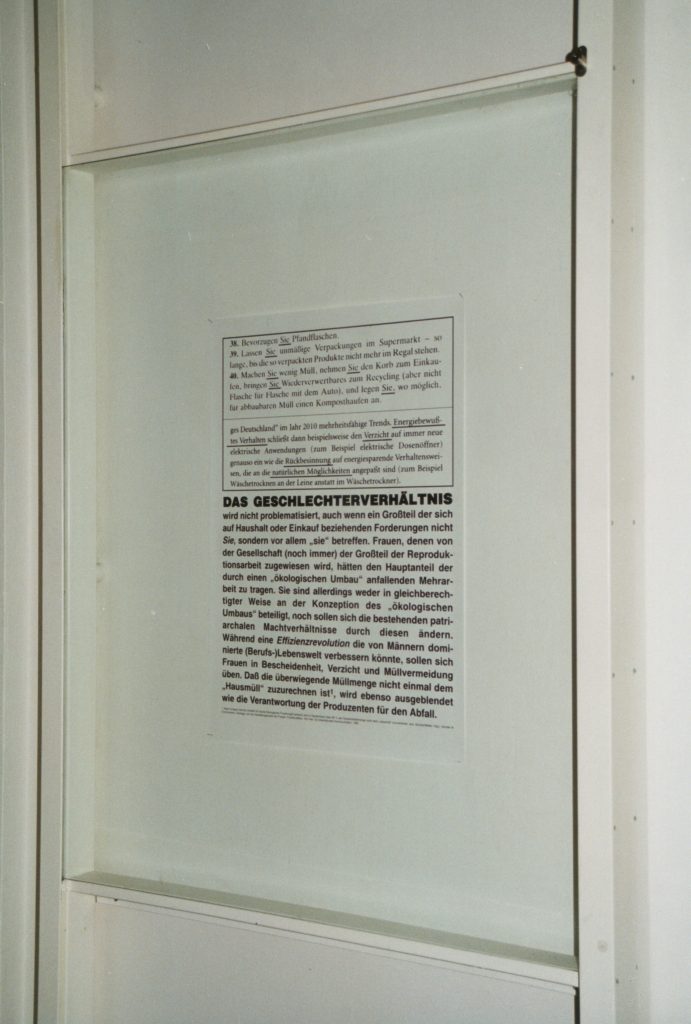
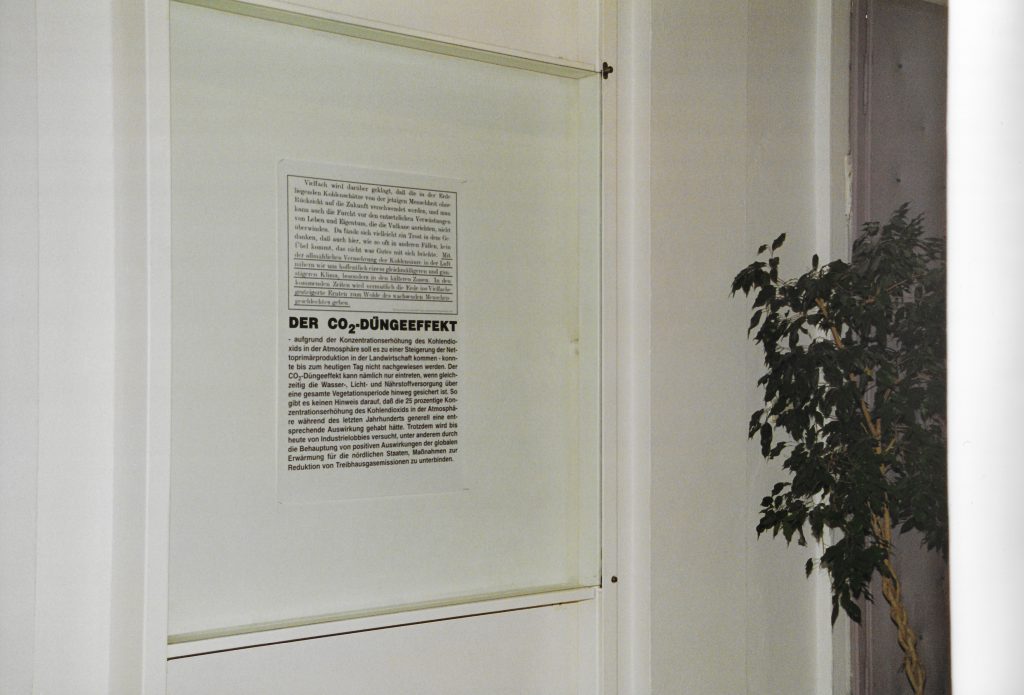
Although the study contains an abundance of positive food for thought, it places too much hope in technical innovations and efficiency technologies. The primary aim seems to be an ecological modernization of the capitalist economic system with a simultaneous securing of existing inner-societal as well as global dominance relations. Beginning with the Wuppertal study and “50 Points for a healthy world” from the book Wir Klimamacher (3) by Hartmut Graßl, director of the world climate research program in Geneva, “100 Years Greenhouse Effect,” confronts the greenhouse effect as a complex problem associated with numerous socio-economic phenomena.
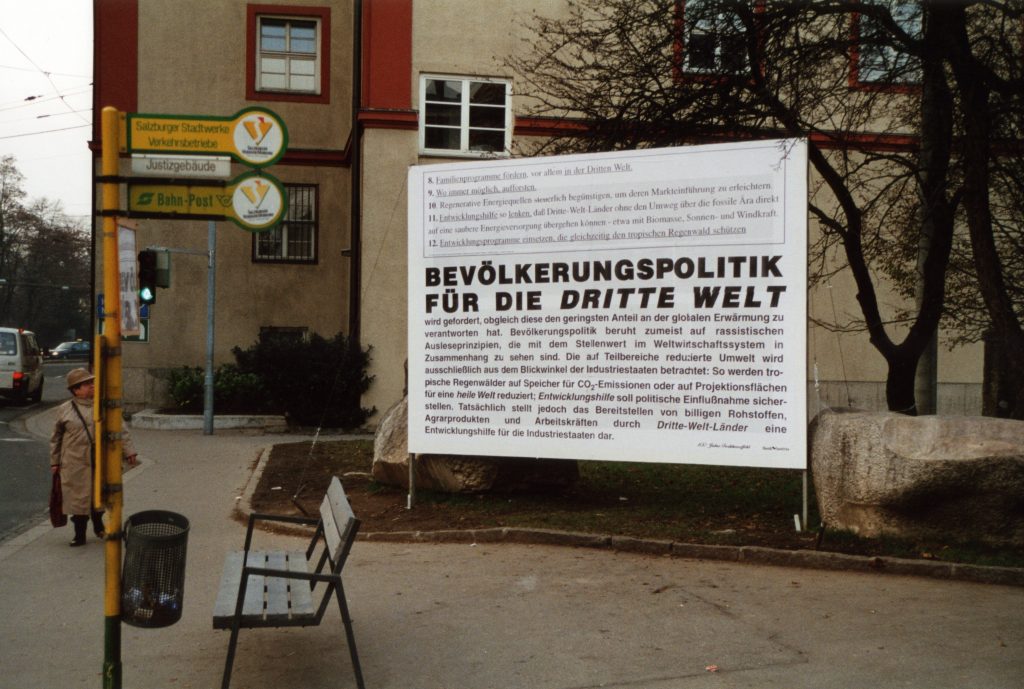
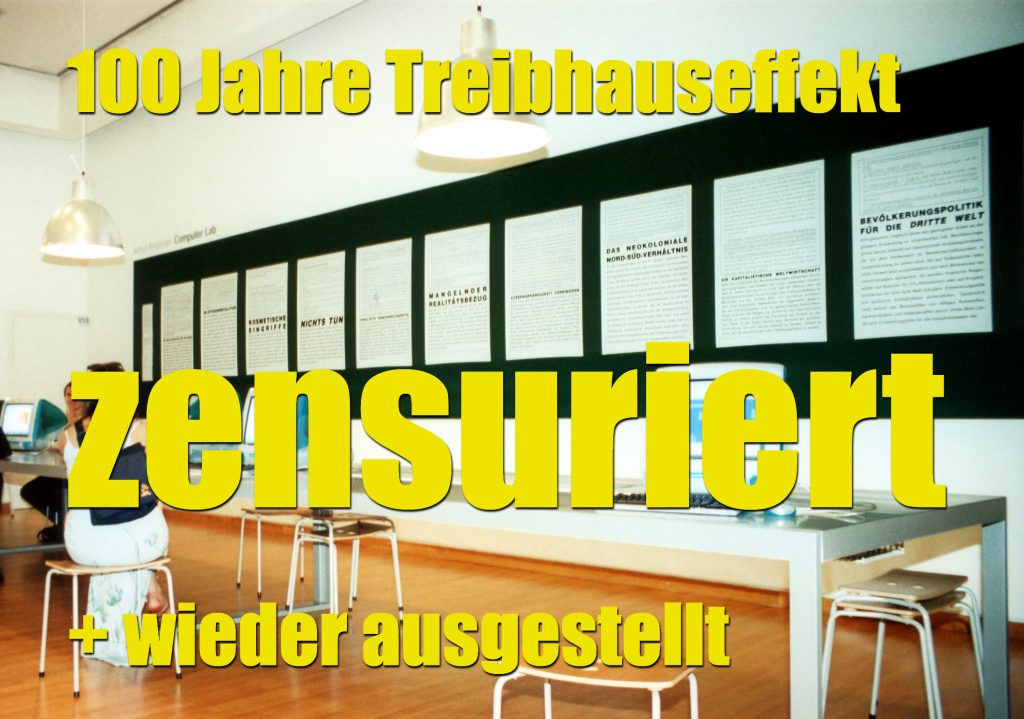
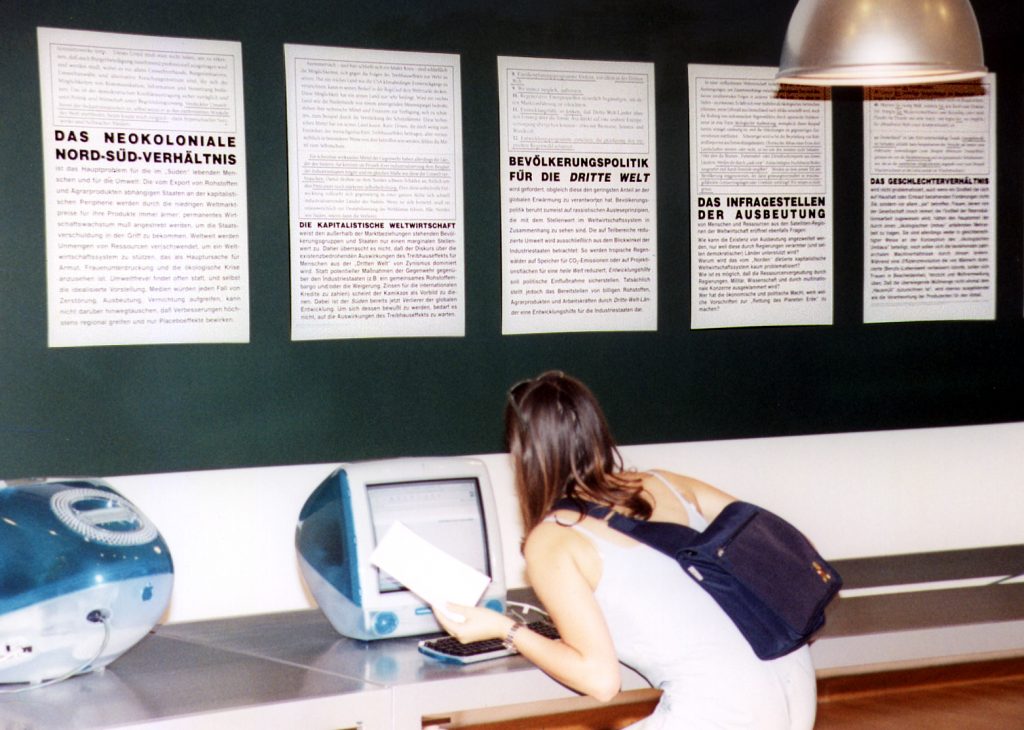
(1) The text was published in London, Edinburgh and Dublin Philosophical Magazine and Journal of Science and excerpts were published in German for the project “100 Jahre Treibhauseffekt.”
(2) BUND; Miseor (ed.). Zukunftsfähiges Deutschland – Ein Beitrag zu einer global nachhaltigen Entwicklung. Basel; Boston; Berlin: Birkhäuser, 1996
(3) Graßl, Hartmut; Klingholz, Reiner: Wir Klimamacher – Auswege aus dem globalen Treibhaus. Frankfurt am Main: S. Fischer-Verlag, 1990.
